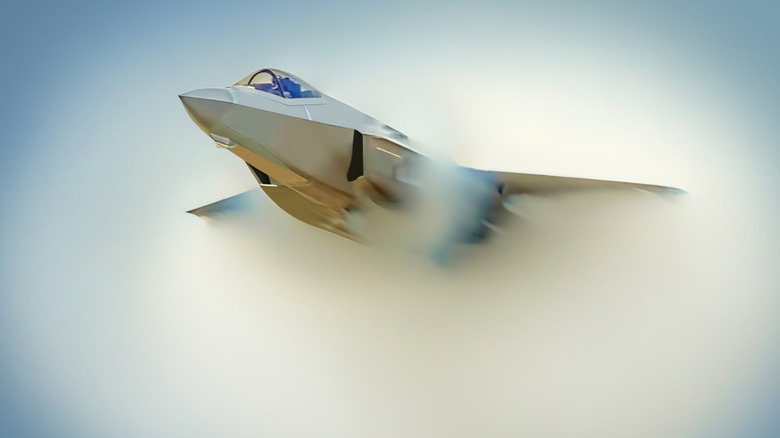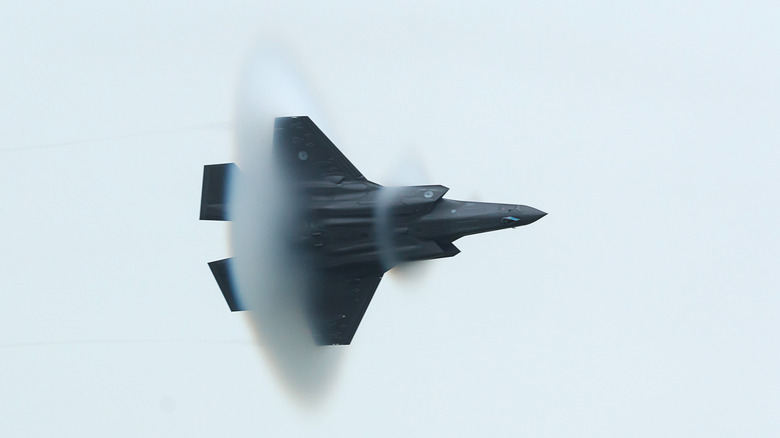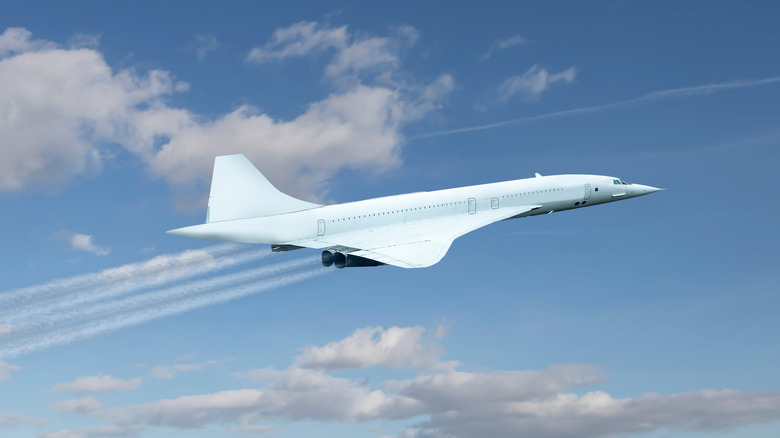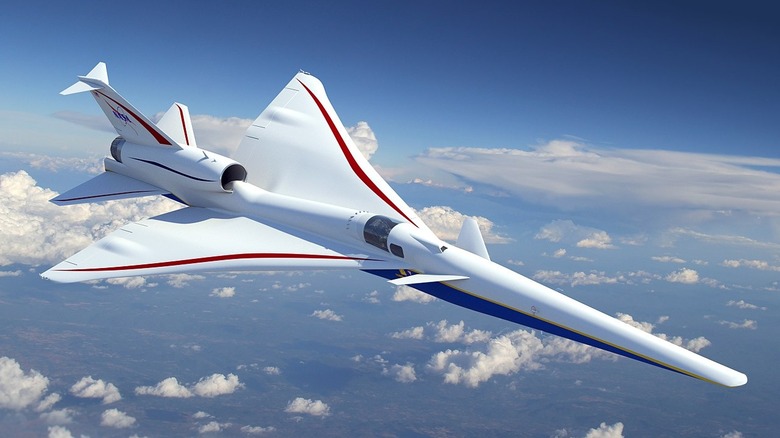The Sonic Boom Explained
Although we may not have fully understood what it was we were hearing, humans have been acquainted with sonic booms for as long as we've had whips. The characteristic crack of a whip is produced when parts of it exceed the sound barrier, as Scientific American explains. The same crack can be heard in boys' locker rooms when a towel is snapped (per The Physics Teacher) or on a firing range whenever a weapon is fired (via Everything What).
But, what most of us think of when we think of sonic booms are military jets zooming by with a cone of vapor around their tails, and rattling windows in their wake. If you're an American under 50, it's likely that you've never experienced a sonic boom from an aircraft because the FAA has banned supersonic flight above the U.S. since 1973. Plus, the last commercial supersonic aircraft was permanently grounded in 2003 after 30 years of service, and that only reached supersonic speeds when it was well away from the continental U.S., according to The New Yorker.
Let's talk about what sound
Before we get into sonic booms, let's do a quick review of how sound works. Sound is basically the air vibrating. Those vibrations travel from the source of the sound outward in all directions in the form of a spherical wave of increasing and decreasing pressure. An analog to these waves would be the ripples in a still pond when it's disturbed, as Media College explains.
If the source of sound is moving, the sound waves will begin to compress themselves in the direction of movement and expand in the opposite direction. This is what happens when we hear a fire truck pass us. The sound waves from the siren compress (causing the pitch of the siren to rise) as the fire truck approaches us, and expand (causing the pitch of the siren to fall) as the truck speeds away from us. This change in frequency is called the Doppler Effect, as HyperPhysics writes.
What creates a Sonic Boom?
If an object moves through the air fast enough, it creates waves called pressure waves. Since these waves propagate through the atmosphere, they behave similarly to sound waves and travel at the same speed (Mach 1). When objects travel really fast, these pressure waves begin to compress ahead of the object. In early test flights leading up to breaking the sound barrier, pilots had to overcome the turbulence caused by this high-pressure wave in front of their planes (via Wonderopolis and Space).
Once the object goes faster than waves can move through the air, a shockwave of high pressure is created. Think of a boat speeding through the water. If it travels faster than the waves it makes as it moves, it leaves a wake in its trail. A sonic boom is essentially a wave of high pressure. When this pressure wave hits our eardrums, we hear it as either a crack or a boom depending on the size of the object causing it.
Where did the booms go?
When airplanes create a sonic boom, the high-pressure wave trails the plane in a cone shape expanding outwards in all directions. According to NASA, this cone expands about one mile for every 1,000 feet of altitude, so a passenger aircraft flying at 35,000 feet moving faster than Mach 1 would produce a sonic boom audible across a 35-mile swath of ground.
Sonic booms create pressure spikes (called overpressure) in the atmosphere that are measured in pounds per square foot (psf) above the ambient air pressure. Most sonic booms produce between 1 and 2 psf of overpressure and scientists from NASA, the FAA, and the Air Force wanted to know how this would affect civilian populations and infrastructure.
In pursuit of this information, the government launched Operation Bongo (1961) and Operation Bongo II (1964), which flew military jets at supersonic speeds over St. Louis and Oklahoma City, respectively (via The New Yorker). The tests in Oklahoma City lasted for six months in 1964 and the residents filed thousands of complaints and claims for damages. By the time the first commercial supersonic airliner flew in 1973, the American public was already against continental overflights by supersonic planes, and Congress banned them the same year, as Gizmodo and Britannica note.
Is there a future for supersonic travel?
NASA has been involved in pushing the envelope of supersonic flight since its inception. They're currently flight testing an experimental jet called the X-59 (pictured) which they believe will significantly mitigate the sonic boom. Plans to conduct studies similar to Operation Bongo are scheduled for 2024. If everything goes according to plan, it's expected that the 1973 rule could be revisited as soon as 2028, as Interesting Engineering points out.
We're already seeing airlines beginning to take interest in revisiting the supersonic travel industry. United Airlines has said they plan to buy 15 jets from Boom, an aviation startup based out of Denver. Boom doesn't have a plane yet but they are set to have one in the air by 2026 and expect to open for business in 2029 (via BBC and CNBC).
If supersonic passenger jets are to return to the skies, they still have some hurdles to clear. The New York Times reported that the Concorde fleet was expensive to maintain and ended up losing money for the airlines. Another problem is the cost. In 2003 a one-way ticket across the Atlantic on a Concorde cost over $6,000. But, if these problems can be overcome, flight times will be dramatically cut on supersonic flights. Think Seattle to Tokyo in under five hours, less than half the time it takes today.




